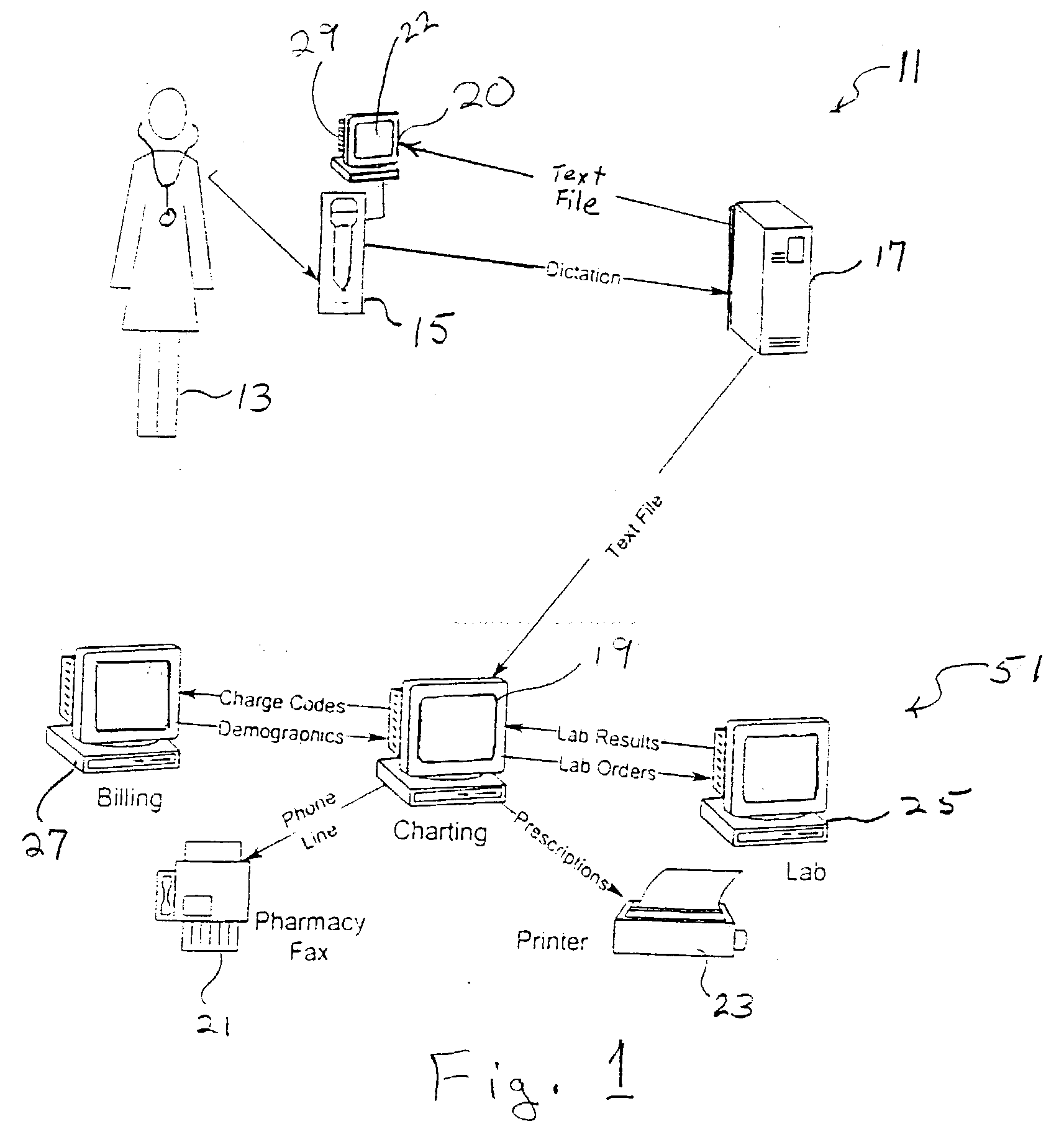Speech to text system using controlled vocabulary indices
a technology of speech to text and vocabulary, applied in the field of speech to text system using controlled vocabulary indices, can solve the problems of not being embraced by physicians, current cpr system being too complicated or too slow, or both, to be used effectively by many physicians, and the limitations of each known system
- Summary
- Abstract
- Description
- Claims
- Application Information
AI Technical Summary
Benefits of technology
Problems solved by technology
Method used
Image
Examples
Embodiment Construction
[0015] Discussion of the modules or parts of the exemplary embodiment will be given herein with respect to specific functional tasks or task groupings that are in some cases arbitrarily assigned to the specific modules for explanatory purposes. It will be appreciated by the person having ordinary skill in the art that a system according to the present invention may be arranged in a variety of ways, or that functional tasks may be grouped according to other nomenclature or architecture than is used herein without doing violence to the spirit of the present invention.
[0016] As seen in FIG. 1, an exemplary aspect of the present invention 11 will permit a user, here a physician or other caregiver, 13 to provide dictation into a microphone 15. Physician dictation is then initially received and processed by electronic speech conversion means 17 such as a computer running an Automated Speech Recognition (ASR) application, e.g., such as adequately robust commercial voice to free text system...
PUM
 Login to View More
Login to View More Abstract
Description
Claims
Application Information
 Login to View More
Login to View More - R&D
- Intellectual Property
- Life Sciences
- Materials
- Tech Scout
- Unparalleled Data Quality
- Higher Quality Content
- 60% Fewer Hallucinations
Browse by: Latest US Patents, China's latest patents, Technical Efficacy Thesaurus, Application Domain, Technology Topic, Popular Technical Reports.
© 2025 PatSnap. All rights reserved.Legal|Privacy policy|Modern Slavery Act Transparency Statement|Sitemap|About US| Contact US: help@patsnap.com



